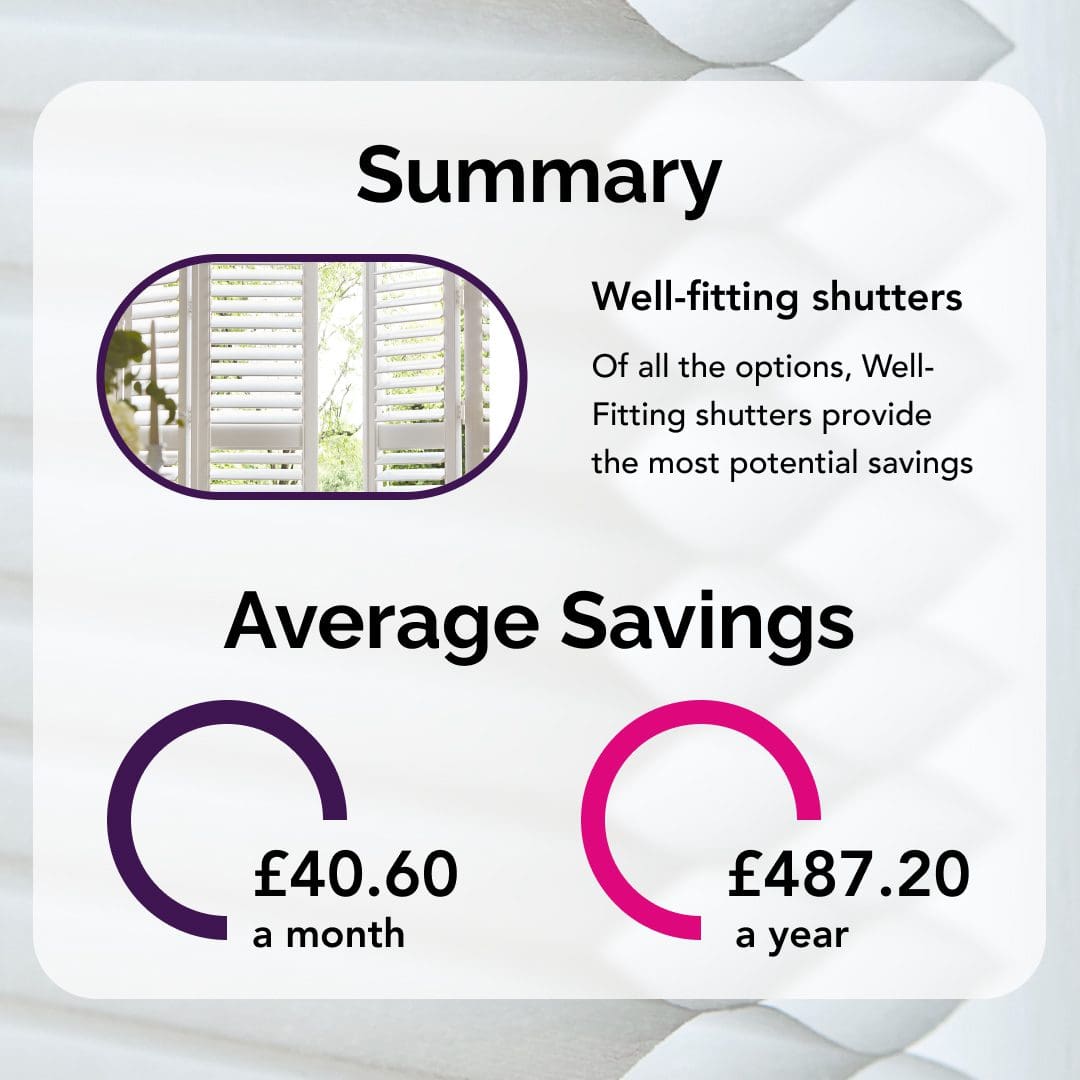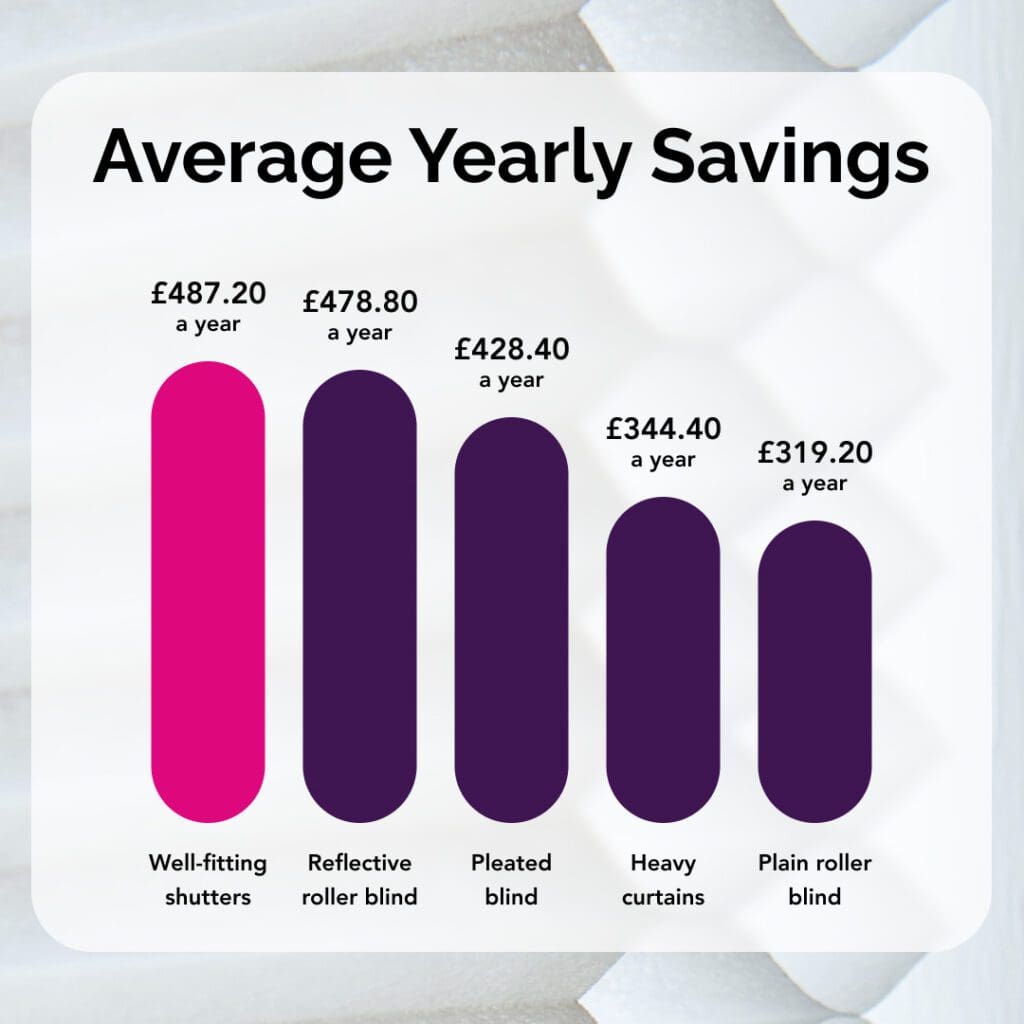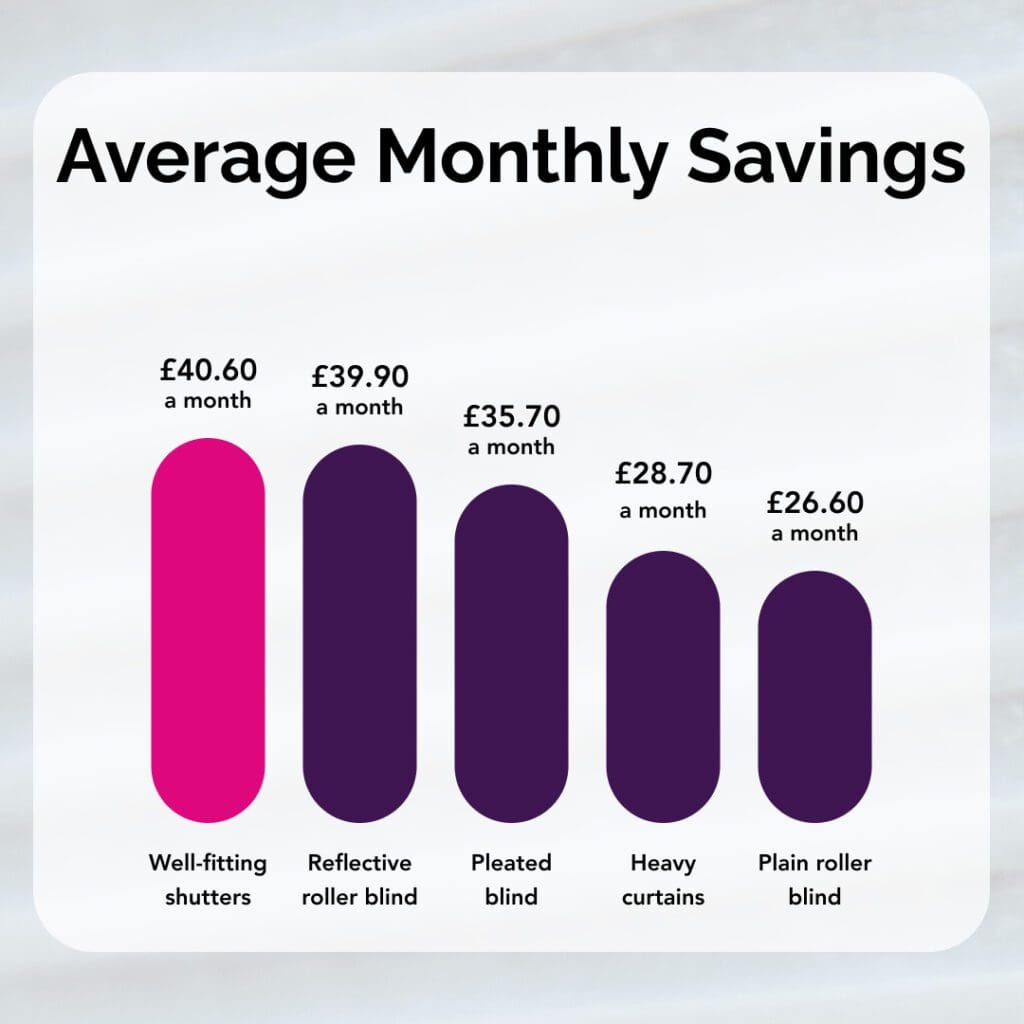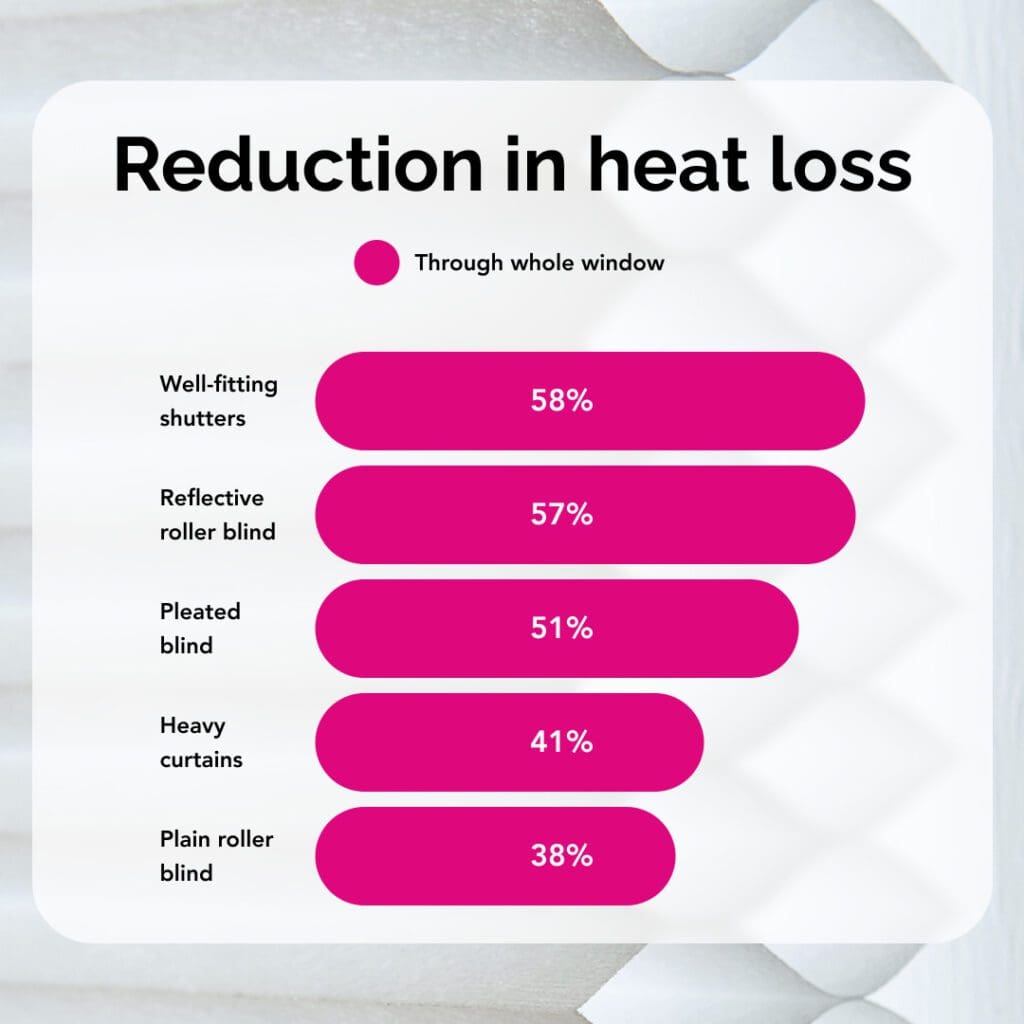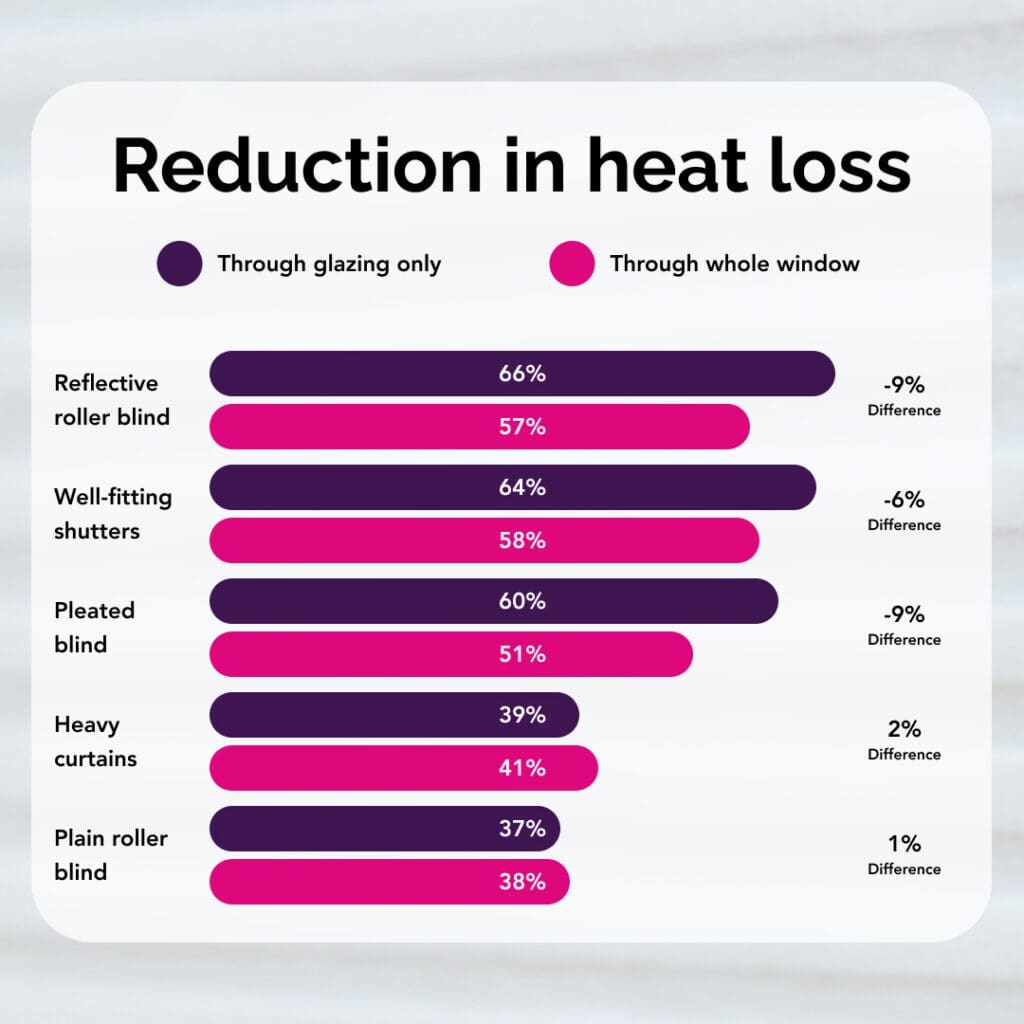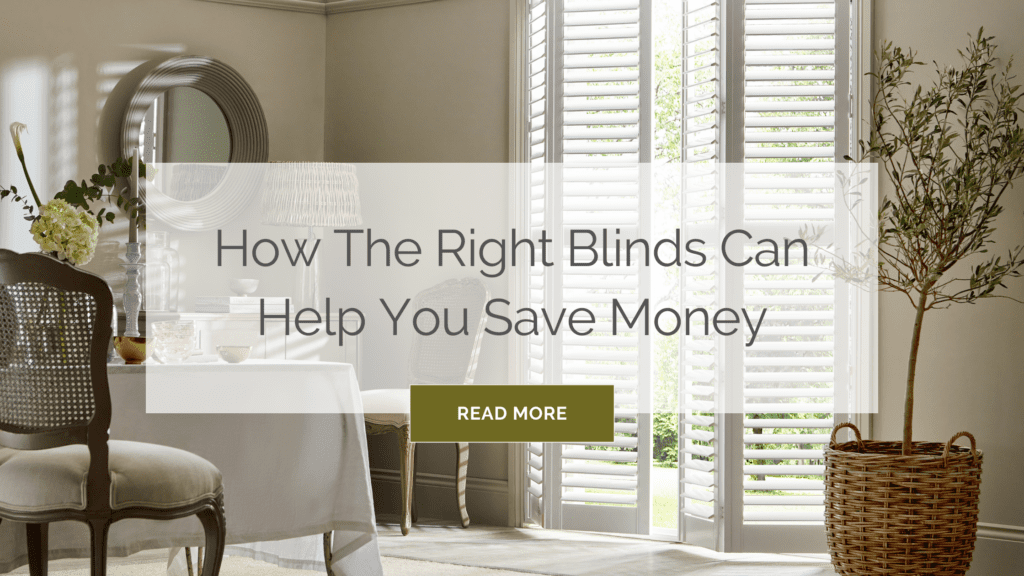You don’t need us to tell you that there’s an ever-increasing focus these days on sustainability and energy efficiency. What you may not know is that installing the right blinds in your home could both save you quite a bit of money while also reducing your carbon footprint. So let’s take a look at how.
Table of Contents
ToggleThe figures
Let’s start by taking a look at how various window coverings can prevent heat loss with these figures from data collected by Historic England.
| Type of blind | Reduction in heat loss through glazing only | Reduction in heat loss through whole window | Difference |
| Reflective roller blind | 66% | 57% | -9% |
| Well-fitting shutters | 64% | 58% | -6% |
| Pleated blinds | 60% | 51% | -9% |
| Heavy curtains | 38% | 41% | 2% |
| Plain roller blinds | 37% | 38% | 1% |
When looking at the numbers, those relating to the whole window are probably the most relevant. You can see that reflective roller blinds lead the way, closely followed by well-fitting shutters. Then come pleated blinds, heavy curtains and finally plain roller blinds, which still reduce heat loss by a surprising 38%.
The reduction in heat loss for all types of blinds using this data was an average of 49%.
How this translates into cost savings
Using gas usage data from government energy regulator Ofgem, along with their estimated unit price of £0.08 per KWh for October to December of 2023, we can easily estimate what a typical household will pay over the course of a year and each month.
| Example – home type and number of residents | Typical annual gas use (kWh) | Typical annual electricity use (kWh) | Typical gas price for a year | Typical gas price for a month |
| Low (flat or 1-bedroom house; 1 to 2 people) | 8,000 | 1,800 | £560 | £46.67 |
| Medium (2-3 bedroom house; 2 to 3 people) | 12,000 | 2,900 | £840 | £70 |
| High (4+ bedroom home; 4 to 5 people) | 17,000 | 4,300 | £1,190 | £99.17 |
So, for a typical household of 2/3 people, heating bills would be expected to be £840 for the year, or roughly £70 per month.
Now, if you combine these figures with those relating to the potential heat loss from installing a blind, the potential savings can be quite significant.
| Blinds | Heat loss to window | Possible monthly savings | Possible yearly savings |
| Reflective roller blinds | 57% | £39.90 | £478.80 |
| Well-fitting shutters | 58% | £40.60 | £487.20 |
| Pleated blinds | 51% | £35.70 | £428.40 |
| Heavy curtains | 41% | £28.70 | £344.50 |
| Plain roller blind | 38% | £26.60 | £319.20 |
Of course, the above stats assume that the homes listed don’t already have blinds, which can’t really be verified. Then there are other factors, like window insulation, to take into consideration.
But this does go to show that the right type of blinds can help to make your home as energy-efficient as possible. Even upgrading your plain roller blinds to reflective ones could save you around £13.30 extra a month. That’s £159.60 a year.
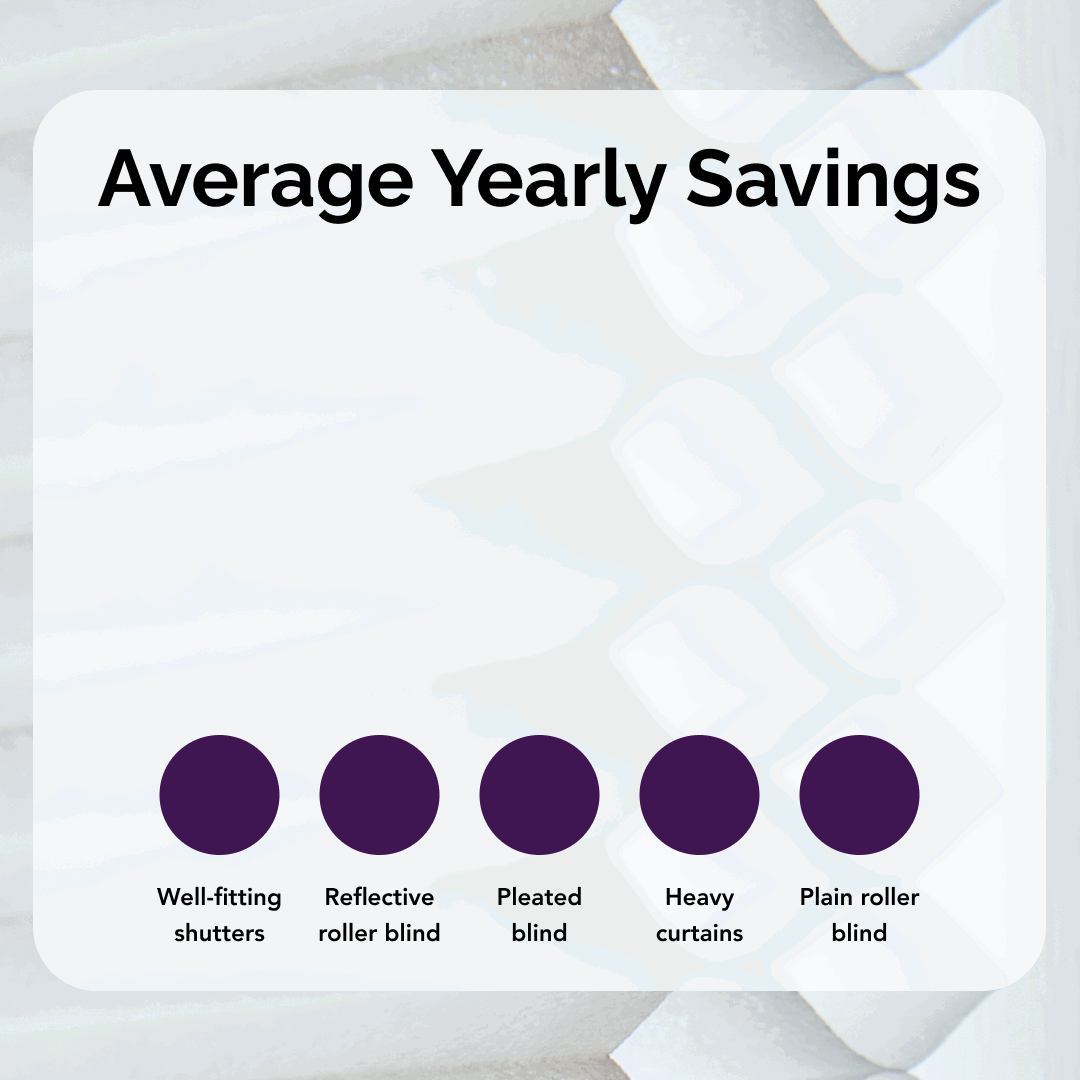
Looks aren’t everything
Although looks are obviously important when it comes to choosing your blinds, it’s the colour and material that can make a big difference to how much energy you are saving.
Every material has a property known as ‘albedo’, sometimes known as reflection coefficient. We don’t want to blind you with the science so, in simple terms, it just means how well a material reflects sunlight.
Dark colours, such as black and navy blue, have a low albedo, meaning they absorb a significant amount of sunlight. This can make rooms warmer, especially during sunny days. On the other hand, light colours, particularly white, have a high albedo, thus reflecting a majority of the sunlight and ensuring rooms remain cooler.
Beyond colour, the material from which a blind is made can play a part in energy efficiency too. For instance, thermal pleated blinds, irrespective of their colour, are designed to trap air. This creates an insulating layer providing superior temperature control.
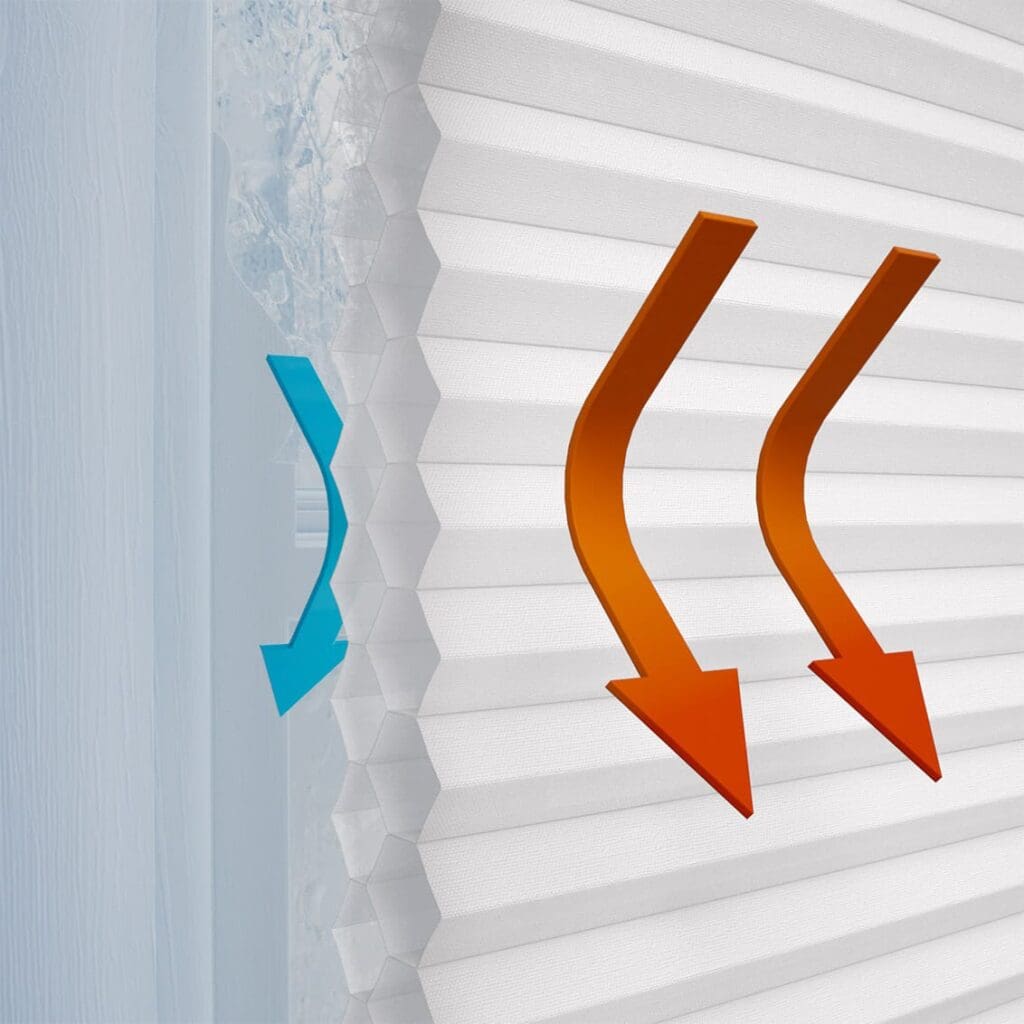
When to open and close your blinds
Managing the temperature of your home isn’t just about the type of blinds you have. It’s also about when you use them. Here are some general guidelines for each season that you can use to manage the temperature of your home and make the most of natural light.
Summer
During the (occasional) warm weather of a UK summer, open the blinds early in the morning to let in the cool air. As the sun rises and temperatures increase, close the blinds, especially on windows directly facing the sun. In the evening, as temperatures drop, you can reopen the blinds to let in the cooler air.
Winter
What you’re looking to do in colder weather is to harness the sun’s warmth. Open blinds on east-facing windows in the morning to capture the early sun then, throughout the day, keep them open on sun-facing windows to warm up your rooms. As evening approaches and temperatures drop, close the blinds to insulate your home and retain the warmth.
Autumn and spring
These transitional seasons can be unpredictable. So, on cooler days, follow the winter strategy, and on warmer days, use the summer approach.
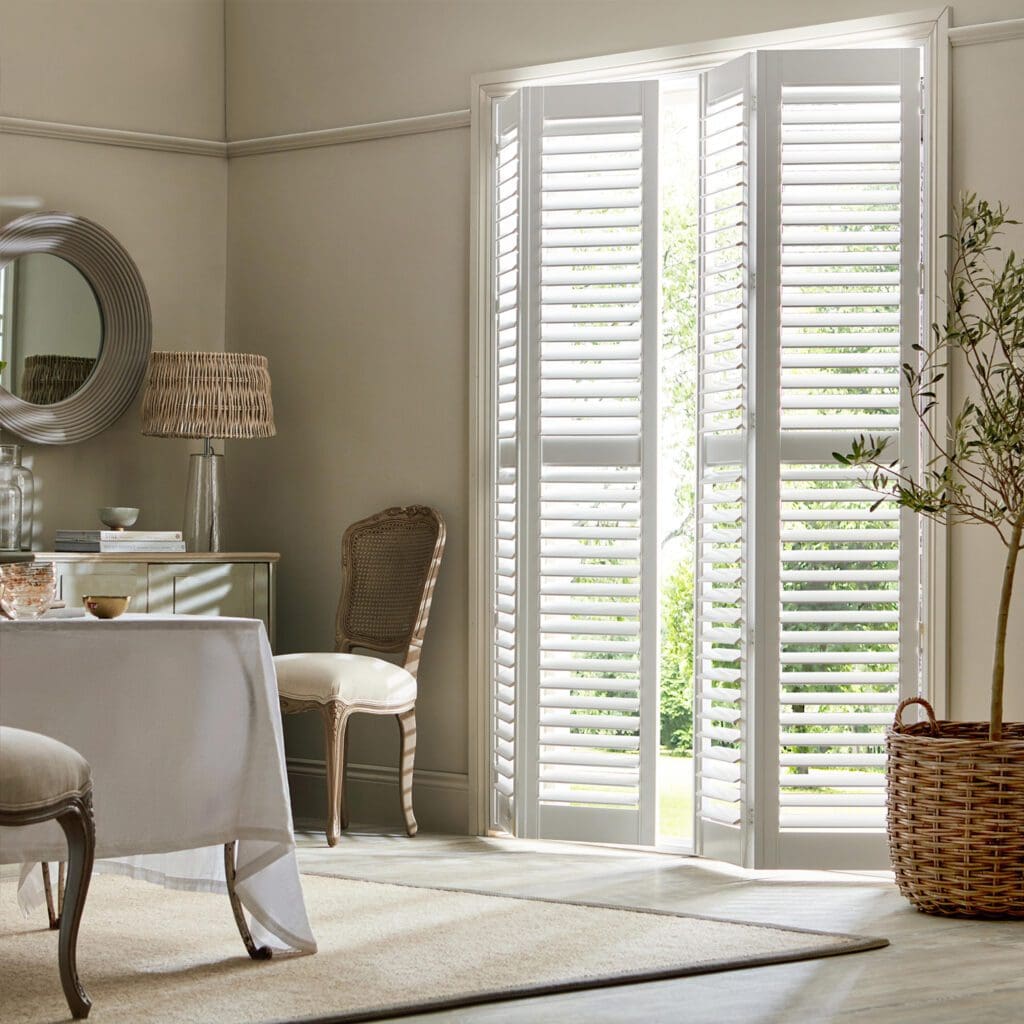
Year-round
Regardless of the season, you should be aware of how sunlight interacts with your home throughout the day and adjust your energy-saving strategy accordingly. For instance, south-facing windows receive the most sunlight, while east-facing windows get the morning sun and west-facing ones the afternoon sun.
Factors such as how well your home is insulated can affect how you use your blinds. And, of course, there are your personal preferences, with some people prioritising natural light over temperature control. The key is to find a balance that works for you.
And finally
The blinds you choose do more than just decorate your windows. They can also play a role in energy efficiency, which has both environmental and financial implications. By understanding how well your blinds retain heat and the difference colour and material can make, you can benefit both the planet and your wallet.
